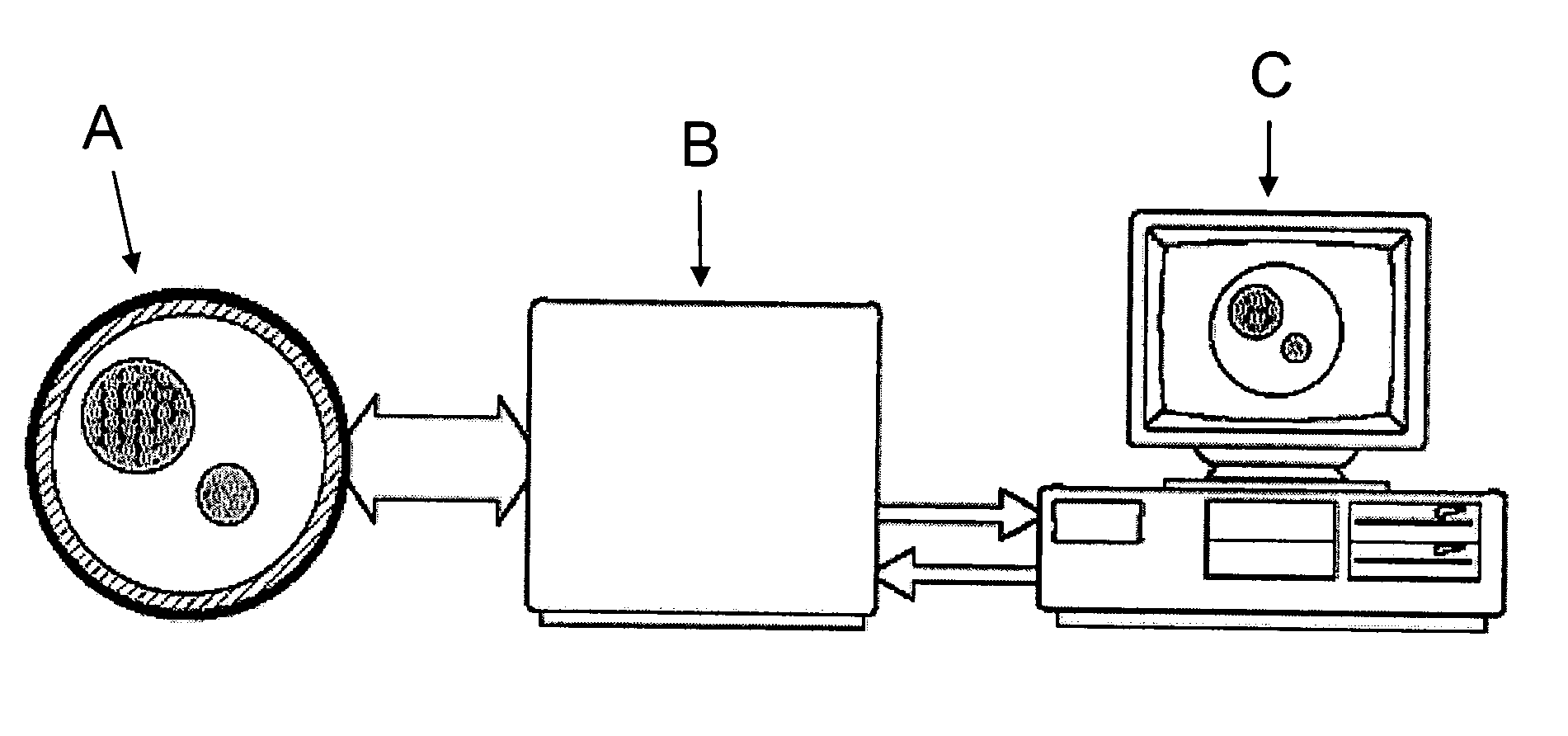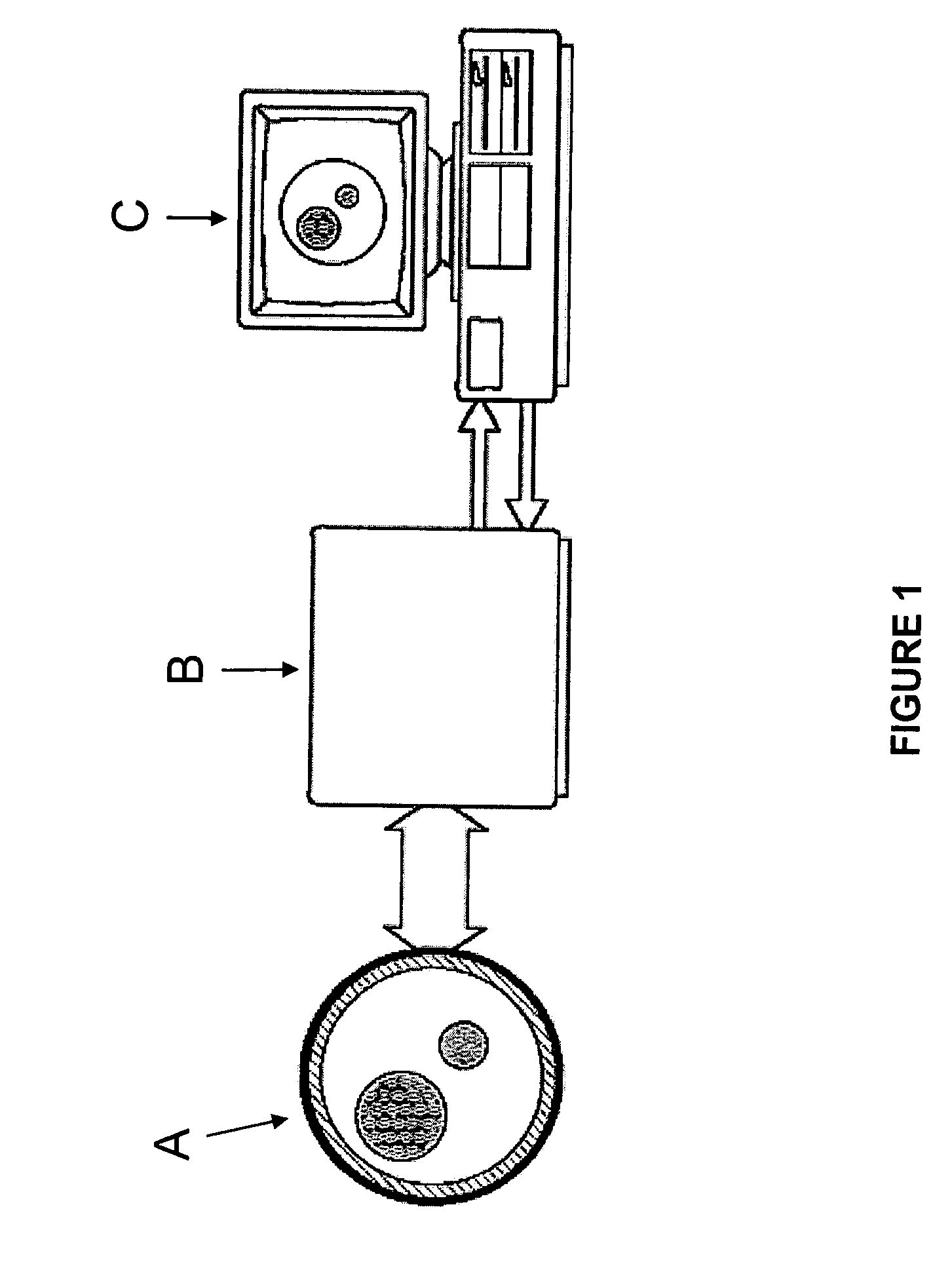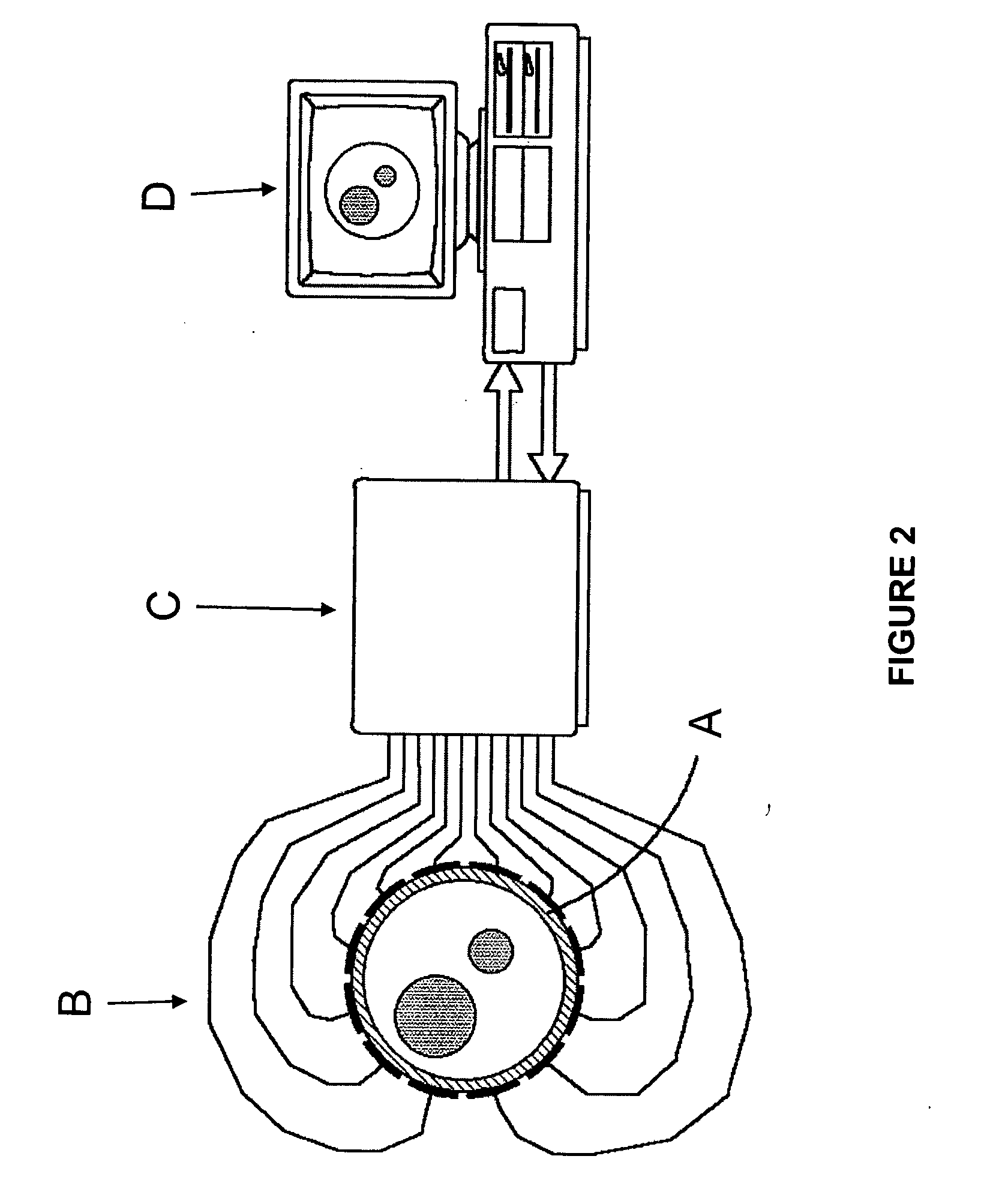Method for imaging multiphase flow using electrical capacitance tomography
a multi-phase flow and electrical capacitance tomography technology, applied in the direction of reradiation, electrical/magnetic detection for well-logging, nuclear radiation detection, etc., can solve the problem that the current availability of multi-phase meters suffers from an unwanted sensibility to changes in the flow regime, and the ionizing radiation methods produce images with the highest definition,
- Summary
- Abstract
- Description
- Claims
- Application Information
AI Technical Summary
Problems solved by technology
Method used
Image
Examples
example
[0104] With the purpose of evaluating the performance of the image reconstruction methods described previously, a set of synthetic ECT data were calculated using the forward problem routine. In order to emulate the main sources of uncertainty in the data produced by a measuring instrument operating in real working conditions (i.e., the random errors inherent to the process of measuring any physical quantity and the errors caused by the limited precision of the measuring instrument), the calculation of the synthetic capacitances for the ideal model were evaluated with a numeric precision of the order of 10−11 in the iterative method used in the forward problem for the calculation of the potential. To emulate the (systematic) imprecision associated with the ECT sensor, during the inversion process (i.e., the estimation of the electrical permittivity distribution inside the pipe) a considerably smaller precision (10−5) was used in the calculation of the potentials in the forward proble...
PUM
| Property | Measurement | Unit |
|---|---|---|
| voltage | aaaaa | aaaaa |
| electrical permittivity | aaaaa | aaaaa |
| dielectric constant | aaaaa | aaaaa |
Abstract
Description
Claims
Application Information
 Login to View More
Login to View More - R&D
- Intellectual Property
- Life Sciences
- Materials
- Tech Scout
- Unparalleled Data Quality
- Higher Quality Content
- 60% Fewer Hallucinations
Browse by: Latest US Patents, China's latest patents, Technical Efficacy Thesaurus, Application Domain, Technology Topic, Popular Technical Reports.
© 2025 PatSnap. All rights reserved.Legal|Privacy policy|Modern Slavery Act Transparency Statement|Sitemap|About US| Contact US: help@patsnap.com



